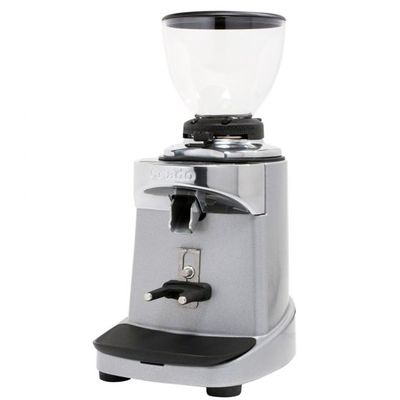Difference between revisions of "Ed/Sandbox"
From Whole Latte Love Support Library
< User:Ed
| Line 41: | Line 41: | ||
{{Support-Documents-Grinder | {{Support-Documents-Grinder | ||
| − | |machine_name = | + | |machine_name = E37J |
|electrical_diagram = | |electrical_diagram = | ||
| − | |machine_manual = | + | |machine_manual = E37J_User_Manual.pdf |
| − | |parts_diagram = | + | |parts_diagram = E37J_Parts_Diagram.pdf |
|service_manual = | |service_manual = | ||
|startup_guide = | |startup_guide = | ||
| Line 53: | Line 53: | ||
{{Specifications-Grinder | {{Specifications-Grinder | ||
|basic_specs = yes | |basic_specs = yes | ||
| − | |width = | + | |width = 8.34in. |
| − | |height = | + | |height = 17 in. |
|depth = 9.85 in. | |depth = 9.85 in. | ||
| − | |weight = | + | |weight = 21 lbs |
| − | |watts = | + | |watts = 300 |
| − | |volts = | + | |volts = 110V-120V (US) |
|housing = yes | |housing = yes | ||
| Line 76: | Line 76: | ||
|burr_type = Flat | |burr_type = Flat | ||
|burr_mats = Stainless Steel | |burr_mats = Stainless Steel | ||
| − | |burr_size = | + | |burr_size = 64 mm |
|capacity = yes | |capacity = yes | ||
| − | |hopper_capacity = | + | |hopper_capacity = 21 oz |
|dispensing = yes | |dispensing = yes | ||
| Line 97: | Line 97: | ||
|performance = yes | |performance = yes | ||
| − | |rpm = | + | |rpm = 1380 Burrs |
|details = yes | |details = yes | ||
Revision as of 12:36, 25 October 2017
This is my sandbox.
The Ceado E37J is an electric burr grinder.
| Ceado E37J |
|---|
| Manufacturer: Ceado |
| Model Name: E37J |
| Type: Electronic Burr Grinder |
Contents
Machine Description
Basic Usage
Cleaning & Maintenance
Burr Cleaning & Calibration
The grinder should be taken apart for cleaning and calibration every 25 lbs of coffee or every 6 months, whichever comes first. Ceado's "Steady Lock" system prevents changes to grind size that would otherwise be caused by thermal expansion of motor components, eliminating the need for re-calibrating. However, it's always a good idea to clean the burrs of coffee residues and leftover grounds collected over time. The following video will show you how to clean your grinder to get the best out of your coffee.
Troubleshooting
Machine Not Powering On
- First plug the machine into another outlet. Make sure the machine is the only device on the outlet, and that the outlet works with other appliances.
- Try backing out the grind to a coarse setting. If the burrs are too close together they will not be able to move.
- Try using the machine on a different outlet, and make sure the machine is the only appliance plugged into that outlet.
- If the machine still is not working then there may be a loose wire internally.
- Once the machine is powering back on, reassemble the grinder and make sure the grind is set to the coarsest setting. Add beans back in and test the machine.
- If the beans grind correctly on this setting slowly move the grind setting to the desired position. Only adjust the grind size while the grinder is running or you risk jamming the grinder or blowing out the fuse again.
Motor On But Beans Won't Grind
If you hear the motor activating but there is nothing being ground, then the burrs are blocked. Make sure not to use oily, caramelized, or flavored beans in the grinder if you are going to be using the grinder for an espresso grind. These types of beans have a lot of sticky residues that can cause jams. Damage caused by use of these beans is often not covered under warranty.
- If the machine is set to a very fine grind, then the burrs may be touching each other. Back the machine off to the coarsest grind setting and see if it's able to grind.
- If the machine is able to grind on this setting, then the burrs were most likely too close together, or the grinder was adjusted when it was off. Try moving the grind back down slowly while the grinder is running. Adjustments should only be made while the grinder is running to prevent jams. Do not set the grind too fine; if the grind is in the Turkish range, like baby powder, then it is set too fine and the machine could jam again.
- If the machine is not able to grind on this setting, then there is a more serious jam. Please refer to the cleaning and maintenance icon above for instructions on burr cleaning and calibration. Once the grinder is cleaned and calibrated, it is important that the machine is set to a coarse grind before using it again. Setting the grind to a fine grind can cause it to jam again.
Grinds Coarse/Inconsistent
- If the machine is on a fine setting and the grinds are still coarse, or if the machine is producing grinds of all different sizes, then the grinder is out of calibration or needs to be cleaned. Please refer to the cleaning and maintenance icon above for instructions on burr cleaning and calibration.
- Oily, caramelized, or flavored beans can cake up on the burrs and push them out of calibration, so these beans should be avoided.
- Additionally adjustments to the grind fineness should only be made while the grinder is running. Moving the burrs closer together for a fine grind will cause them to press against any bean fragments or grinds already in the grinder.
- If the burrs are moving, those fragments get ground up and brushed aside.
- If the burrs aren't moving, then they will press into those fragments and cause the burr to get pushed out of alignment.
- Additionally adjustments to the grind fineness should only be made while the grinder is running. Moving the burrs closer together for a fine grind will cause them to press against any bean fragments or grinds already in the grinder.
- If the grinder is older, or if something was put through the grinder that is not meant to be put in it, the burrs may be worn out. If cleaning and calibrating the grinder is not resolving the behavior then it may be time to replace the burrs.
Diagrams & Manuals
| E37J | |
|---|---|
| Electrical Diagram: | |
| Machine Manual: | E37J_User_Manual.pdf |
| Parts Diagram: | E37J_Parts_Diagram.pdf |
| Service Manual: | |
| Startup Guide: | |
Specifications
| Basic Specs | |
|---|---|
| Width: | 8.34in. |
| Height: | 17 in. |
| Depth: | 9.85 in. |
| Weight: | 21 lbs |
| Wattage: | 300 |
| Voltage: | 110V-120V (US) |
| Housing | |
| Clearance Height For Portafilter: | 2.75 in. |
| Built-In Tamper: | No |
| Housing Materials: | Cast Aluminum |
| Bean Hopper Material: | Plastic |
| Removable Hopper: | Yes |
| Frame: | Cast Aluminum |
| Usage | |
| Grind Selection: | All Grinds |
| Recommended Applications: | Home / Commercial |
| Components | |
| Grinding Method: | Burr |
| Burr Type: | Flat |
| Burr Material: | Stainless Steel |
| Burr Size: | 64 mm |
| Capacity | |
| Bean Hopper Capacity: | 21 oz |
| Dispensing | |
| Dosing Options: | Doserless |
| Doser Adjustability: | Programmable Time |
| Portafilter Compatibility: | All |
| Controls | |
| Number Of Grind Settings: | Infinite |
| Programmable Grinding: | Yes |
| Type Of Controls: | Electronic |
| Display Type: | Digital |
| Programmability Type: | Time |
| Type Of Control Switches: | Electronic |
| Controls: | Push Button |
| Step Type: | Stepless |
| Performance | |
| RPM: | 1380 Burrs |
| Details | |
| Country Of Manufacture: | Italy |
| NSF Certified: | Yes |
Machine Not Powering On
- First plug the machine into another outlet. Make sure the machine is the only device on the outlet, and that the outlet works with other appliances.
- Try backing out the grind to a coarse setting. If the burrs are too close together they will not be able to move.
- Try using the machine on a different outlet, and make sure the machine is the only appliance plugged into that outlet.
- If the machine is being used on a GFI outlet, try moving it to a non-GFI outlet for testing. GFI outlets will sometimes trip because of current fluctuation, especially with high power appliances such as an espresso machine. Click here for more detailed information on GFI function. The article mentions that GFI's are setup to detect small fluctuations in current, in order to prevent electrocution. The GFI is not able to determine the cause of these fluctuations. Common causes are:
- The outlet has been exposed to moisture, dust, or debris, which is causing the outlet not to ground properly. This will result in a current fluctuation and the GFI will trip. If the GFI outlet is located on the outside wall of a house moisture caused by high humidity, rain, or other weather can also contribute to these fluctuations.
- The GFI is old, damaged, or broken. GFIs contain mechanical parts which can wear out over time or break from misuse.
- The appliance being plugged into the outlet is fluctuating in current. Some appliances have motors, pumps, sensors, etc. that cause current fluctuations as a part of their normal operation. Espresso machines have both pumps and heating elements which can be on for extended periods of time. It is normal for these parts to have slight current fluctuations during operation. Most GFIs are set to trip after a 4-6 mA fluctuation, which some espresso machines will exceed during operation. This is not because of a ground fault, but because of normal current fluctuations the machine produces.
- In some cases the GFI will need to be replaced. The GFI may be installed incorrectly causing it to trip, or there may be a ground fault elsewhere on the circuit. Have an electrician examine the GFI and the circuit it is connected to.
- If the correct outlet type is being used and the machine is still not powering, try testing another appliance on the same outlet.
- If the machine still is not working then there may be a loose wire internally.
- The safety fuse may have tripped inside the machine.
- Remove side panels of the machine to access the inside of the unit. The side panels are secured by 4 allen screws on both sides of the unit.
- Once the side panel is removed inspect the inside of the machine. Check the power leads coming from the power cord, the power switch, and for any other loose or disconnected wires.
- Once the machine is powering back on, reassemble the grinder and make sure the grind is set to the coarsest setting. Add beans back in and test the machine.
- If the beans grind correctly on this setting slowly move the grind setting to the desired position. Only adjust the grind size while the grinder is running or you risk jamming the grinder or blowing out the fuse again.

